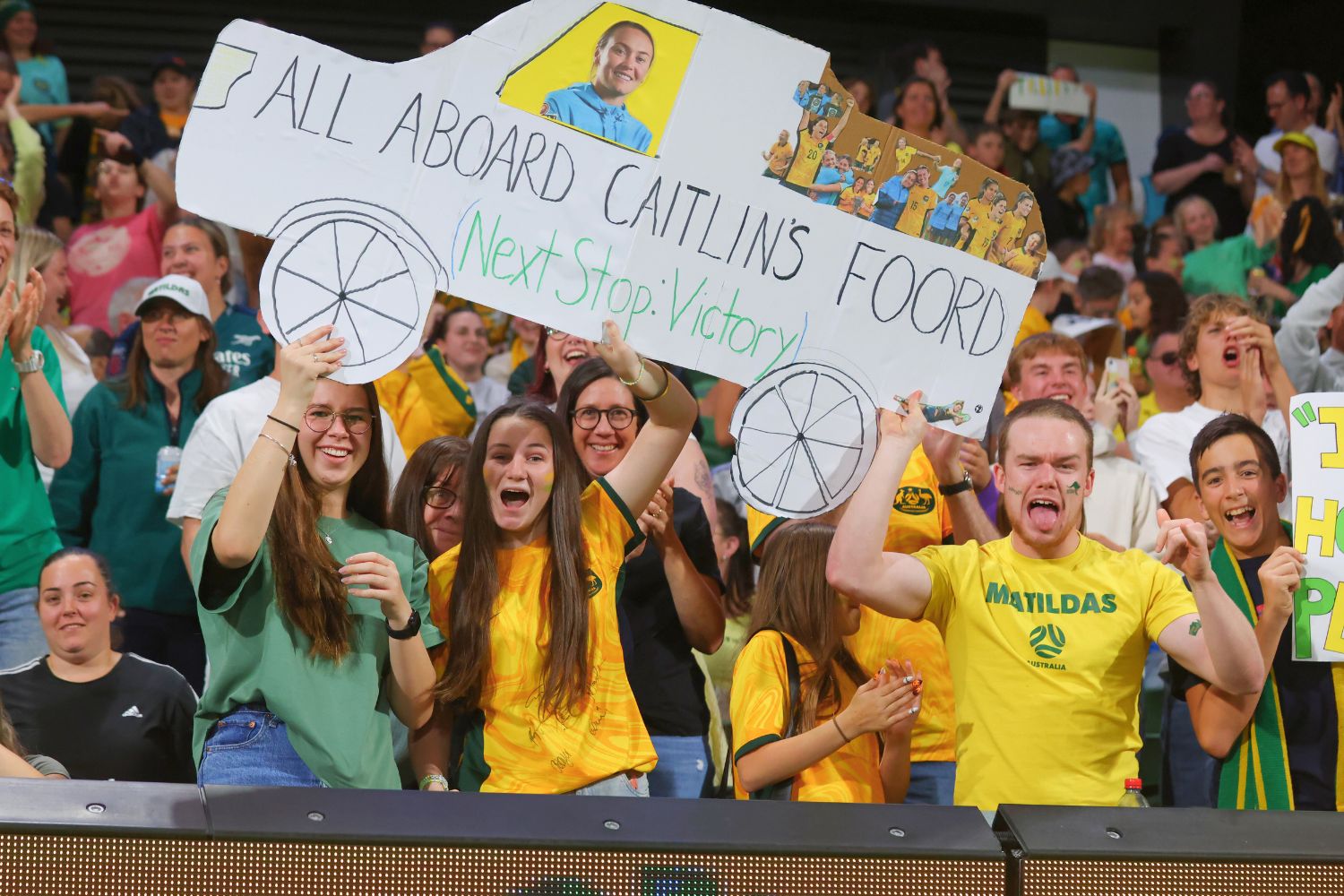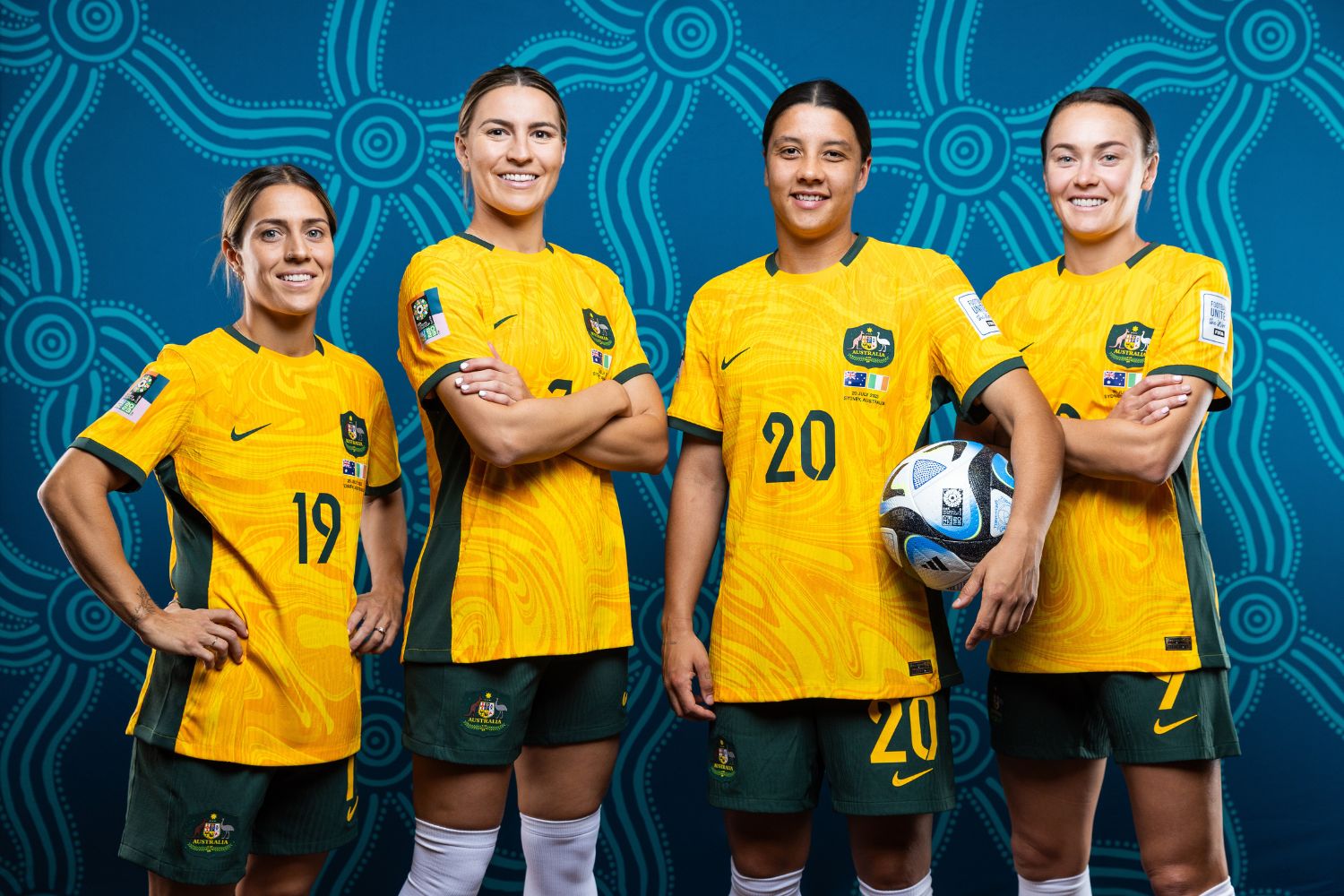The Matildas and Socceroos could receive a pay rise of up to $80,000 per year with their new pay deal.
This pay rise is on top of their tournament prize money and club salaries… finally!
As well all know, the Matildas have made Australia proud in this years Women’s World Cup, having set television rating records.
Their games attracted hundred of thousands of fans and because of this, it’s only right that the country’s top women footballers receive compensation to reflect this.
Football Australia and Professional Footballers Australia have shared some insight on the new agreement.
WATCH NOW: Matilda’s players react to getting picked for the World Cup squad. Article continues after video.
PFA co-chair, Kate Gill, spoke to The Guardian and said that this deal was an evolution of the original 2019 agreement.
“The cornerstone for that was obviously gender equality, which is still a core principle of this deal in itself,” she said.
“This was around moving towards a partnership that was making sure that the players were rewarded for their success on the pitch, but also incentivised to grow the revenues as well for the business.”
This development has matched the Matildas with the Socceroos; they will transition immediately from centralised contracts to receiving commercial payments and match fees… just like the male footballers.
Under the previous agreement, tier-one Matildas were earning $83,000 per year… that number jumped to a total of $110,000 at the conclusion the previous CBA.
Now, top Matildas and Socceroos will be able to earn up to $200,000 annually as a base rate. This is a whopping $90,000 increase for tier-one Matildas players since the previous deal.

Prior to this, the pay of Australia’s women’s soccer team the Matildas paled in comparison to the men’s soccer team the Socceroos, despite competing at the same elite level.
It’s an issue that has long plagued women in sports, athletes undertaking the same amount of training, making the same commitments and sacrifices, and following their dream – but for a significantly lower salary than their male counterparts.
It doesn’t help that the prize money pool for the FIFA Women’s World Cup is laughably lower – $165m AUD – than the FIFA Men’s World Cup that was held in Qatar in 2022, with a prize pool of a whopping $440m AUD.
A common argument for the low pay grade for female professional athletes is that women’s sport is generally less popular than men’s – subsequently generating less revenue – but you only have to look at the sell-out stadium crowds and millions of Aussie eyes glued to screens across the country this FIFA Women’s World Cup to see the truth.
RELATED || Public holiday on cards if Matildas win World Cup?
Female professional athletes are just as good (if not better) than their male counterparts and deserved to be recognised as such!
Just this World Cup alone, the Matildas made history as the first national Australian team to progress to the semi-finals, the Soceroos’ best performance being two Round of 16 finishes in both 2006 and 2022.

But despite ranking higher in the global competition, and efforts to close the gender pay gap in recent years, there are still leaps and bounds to go to ensure our girls in the green and gold, and female professional athletes in general are paid a fair amount for their efforts.
So how much were the Matildas being paid to play in the FIFA Women’s World Cup in 2023?
RELATED || All the times the royals have played sport
Whilst the exact amount listed on the contracts for the Matildas squad is kept private, the Financial Review previously reported that a newcomer Matildas salary starts at an estimated $100,000 and goes as high as a $200,000 fixed annual salary.
Then as players rank higher, and play longer, their salary continues to climb.
WATCH NOW: Matildas speak out about poor prize money in FIFA Women’s Soccer. Article continues after video.
Outside of their commitments to the Matildas squad, several players have secured impressive salaries for international women’s soccer teams.
According to the Financial Review, Matildas captain Sam Kerr, 29, earned a staggering $3.3million in 2022. The skipper’s Chelsea contract is worth roughly AU$600,000 per season, a 13-year partnership with Nike is reportedly worth $1 million.
Forbes has also listed Sam to be the 11th highest paid soccer player in the 2023 FIFA Women’s World Cup as earning around $895,000 for her role on the Matildas and another $895,000 for her endorsements and sponsorship deals. Yet this doesn’t compare to her male counterparts, particularly French player Kylian Mbappe, 23, is predicted to earn roughly AU$200 million this season, according to Forbes.
She’s followed by Ellie Carpenter who banked an estimated $1.2m in 2022 to play for France’s Olympique Lyonnais, 20-year-old Mary Fowler who is earning an expected $440,000 to play for Manchester City, Emily van Egmond who is earning an estimated $400,000 to play for San Diego Wave FC and Steph Catley who is earning between $95,000 – $190,000 to play for Arsenal WFC.

As for the Socceroos, starting salaries are estimated at $226,000 per player, with the 2022 World Cup squad walking away with what will be millions more ($19.15m to be exact) in bonuses for simply getting to their Round of 16, significantly more than what the Matildas will receive even if they take home the trophy.
Shockingly, as recently as 2015, each squad member only took home a meagre $750 for reaching the quarter-final of the competition.
“It has come a long way in the last eight years since my World Cup,” former Matildas player Michelle Heyman said in an interview on The Project.
“But at the same time, it’s still so, so far away from equality.”
Already the Matildas have made history, drawing in unparalleled crowds as a nation cheers them on.
We can only hope that with this traction, comes the recognition and higher paydays our girls well and truly deserve sooner rather than later – or at least in time for the 2027 FIFA Women’s World Cup which FIFA have already pledged they will do.



